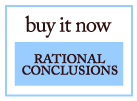Citations
Appendix - Details on Frequently Cited Sources
Ancient Work: Mishnah
(Translated and introduced by Herbert Danby. Oxford University Press, 1954. First published in 1933.)
The introduction states the Mishnah is a Jewish holy book primarily concerned with religious laws. Most of this work was compiled and edited around 200 A.D. by the spiritual leader of Judaism at that time (Rabbi Judah). The "essential and characteristic element" of the Mishnah is that it contains "the Oral Law" of that time. Generally speaking, the Oral Law is comprised of "beliefs and religious practices" that are not explicitly written in the Hebrew Scriptures.
On page xii of the introduction, Danby states that after the destruction of the Temple in 70 A.D., the sect called the Pharisees "took the position, naturally and almost immediately, of sole and undisputed leaders of such Jewish life as survived. Judaism as it has continued since is, if not their creation, at least a faith and a religious institution largely of their fashioning; and the Mishnah is the authoritative record of their labor." Page xv states the Mishnah has a "purely Pharisean outlook."
Another modern English translation of the Mishnah (by Jacob Neusner. Yale University Press, 1988) takes issue with this viewpoint. On pages xxxii-iii, Neusner argues the Mishnah "cannot be called a document only or mainly" of the Pharisees. In support of this view, he writes:
[T]he Mishnah rarely refers to the Pharisees. When it does, it does not represent them as definitive authorities. Sages, not Pharisees, are the Mishnah's authorities. A few of the Mishnah's authorities, particularly Gamaliel and Simeon b. Gamaliel, are known from independent sources to have been Pharisees; Paul tells us about Gamaliel, and Josephus about Simeon b. Gamaliel. But that is the sum and substance of it. Consequently, to assign the whole of the Mishnah to the Pharisees who flourished before A.D. 70 and who are known to us from diverse sources, all of them composed in the form in which we know them after A.D. 70, is hardly justified.
With tremendous respect for Jacob Neusner, whose scholarly contributions are invaluable to the study of ancient Judaism, I find Danby's view more sustainable. Although Josephus writes about the Pharisees in works that were published after 70 A.D., he was born in 37 A.D. and was well ensconced in public affairs before the Temple was destroyed.[2557] Furthermore, in his autobiography, Josephus writes that he "began to conduct" himself "according to the rules of the sect of the Pharisees" at the age of nineteen, which was 56 A.D.[2558] Given these facts and the scarcity of Jewish historical works from this era, one cannot reasonably expect to find a more credible source concerning the Pharisees. I would also dispute that all of Paul's writings were composed after 70 A.D. However, we don't need to delve into dating Paul's writings because the writings of Josephus go a long way towards resolving this issue. In the Antiquities, Josephus writes:
[T]he Pharisees have delivered to the people a great many observances by succession from their fathers, which are not written in the laws of Moses [the first five books of the Bible]; and for that reason it is that the Sadducees [an opposing sect] reject them, and say that we are to esteem those observances to be obligatory which are in the written word, but are not to observe what are derived from the tradition of our forefathers. And concerning these things it is that great disputes and differences have arisen among them....[2559]
To repeat, the primary defining element of the Pharisees is that they "delivered to the people a great many observances by succession from their fathers, which are not written in the laws of Moses." Open to just about any page in the Mishnah and that is precisely what you'll find. The Mishnah is a compilation of exactly what Josephus said the Pharisees followed: a tremendous number of laws not found in the Jewish scriptures along with an account of how they were passed down from generation to generation.[2560]
That the Mishnah rarely uses the word "Pharisee" can be easily explained by the fact that it was compiled generations after the destruction of the Temple. If the doctrines of the Pharisees were ubiquitous at this time and the term "Pharisees" fell out of use because they were no longer considered a sect but represented most all of Judaism, then it would make perfect sense for the authorities in the Mishnah to be referred to as sages. The following quote from the Jewish Encyclopedia fits perfectly with this scenario:
[W]ith the destruction of the Temple, the Sadducees disappeared altogether, leaving the regulation of all Jewish affairs in the hands of the Pharisees. Henceforth Jewish life was regulated by the teachings of the Pharisees.... Pharisaism shaped the character of Judaism and the life and thought of the Jew for all the future.[2561]
Also in concert with this is the following passage from the Mishnah. One of the primary authorities in it is a rabbi by the name of Johanan ben Zakkai. He was the most important sage of the periods before, during, and just after the destruction of the Temple.[2562] The Mishnah quotes him as stating, "Have we naught against the Pharisees save this!"[2563] The Mishnah then goes on to describe a disagreement that Johanan had with a Pharisaic doctrine. What this tells us is that Johanan agreed with the teachings of the Pharisees on everything but this one issue. Given that the Mishnah contains thousands of laws and that it identifies Johanan ben Zakkai as the keeper of "the Law" during his generation,[2564] this is an extremely significant statement.
Further supporting the view that the doctrines of the Pharisees became the norm after the destruction of the Temple is the fact that the Mishnah cites rules attributed to Gamaliel and Simeon ben Gamaliel without even hinting that they were Pharisees.[2565] [2566]
In summary, by the time the Mishnah was compiled and edited around 200 A.D., the label "Pharisee" had clearly fallen out of usage. However, the doctrines found in the Mishnah generally reflect those of a people, known as the Pharisees, from an earlier era.
Ancient Work: Tosefta
(Translated by Jacob Neusner. KTAV Publishing House.)
This translation is composed of six divisions published between 1977 and 1986. Page ix in the introduction to the first division states, "The Tosefta, a collection of statements to supplement the Mishnah, came to closure about two centuries after the Mishnah, one may guess at about 400." It has the same basic format as the Mishnah, and the "authorities" cited in it are the same authorities cited in the Mishnah.
Ancient Work: Babylonian Talmud
(Multiple translations and editions.)
The Babylonian Talmud is a series of commentaries pertaining to Jewish civil and religious laws. It contains excerpts from the Mishnah, surrounded by interpretations and supplemental information provided by Jewish scholars who resided in Babylonia between the 3rd and 6th centuries A.D. When the word "Talmud" is used by itself, this commonly refers to the Babylonian Talmud as opposed to the Talmud of the Land of Israel (see below), because it is the more popular of the two.
Ancient Work: Talmud of the Land of Israel
(Multiple translations and editions.)
Also called the Jerusalem Talmud, Palestinian Talmud, or Talmud Yerushalmi. The Jerusalem Talmud is a series of commentaries pertaining to Jewish civil and religious laws. It contains excerpts from the Mishnah, surrounded by interpretations and supplemental information provided by Jewish scholars who resided in the land of Israel between the 3rd and 6th centuries A.D.
Citations
[2557] Ancient Work: Life of Flavius Josephus. By Flavius Josephus. Published about 100 A.D. Translated by William Whiston. http://www.ccel.org/ccel/josephus/works/files/autobiog.htm
Chapter 3:
But when I was in the twenty-sixth year of my age [about 64 A.D.], it happened that I took a voyage to Rome, and this on the occasion which I shall now describe. At the time when Felix was procurator of Judea there were certain priests of my acquaintance, and very excellent persons they were, whom on a small and trifling occasion he had put into bonds, and sent to Rome to plead their cause before Caesar.
NOTE: This is one of several examples from Josephus' writings revealing that he was involved with public affairs before the Temple was destroyed.
[2558] Ancient Work: Life of Flavius Josephus. By Flavius Josephus. Published about 100 A.D. Translated by William Whiston. http://www.ccel.org/ccel/josephus/works/files/autobiog.htm
Chapter 2.
[2559] Ancient Work: Antiquities of the Jews. By Flavius Josephus. Published about 93 A.D. Translated by William Whiston. Book 13. http://www.ccel.org/ccel/josephus/works/files/ant-13.htm
Chapter 10, Section 6.
[2560] In the Mishnah, see Aboth 1:1 and the sections that immediately follow it.
[2561] Article: "Pharisees." Jewish Encyclopedia. Volume 9. Funk & Wagnalls, 1912. First published in 1903. Pages 661-667.
[2562] Article: "Johanan B. Zakkai." Jewish Encyclopedia. Volume 7. Funk & Wagnalls, 1910. First published in 1904. Pages 214-217.
Page 214 states that Johanan ben Zakkai was "[t]he most important tanna [sage] in the last decade of the Second Temple, and, after the destruction of Jerusalem, the founder and first president of the academy at Jabneh. ... [I]t is assumed that Johanan lived at the latest one decade after the destruction of Jerusalem..."
[2563] Yadaim 4:6
[2564] In the Mishnah, Aboth 2.8 states: "Rabban Johanan b. Zakkai received [the Law] from Hillel and from Shammai."
[2565] Ancient Work: Life of Flavius Josephus. By Flavius Josephus. Published about 100 A.D. Translated by William Whiston. http://www.ccel.org/ccel/josephus/works/files/autobiog.htm
Chapter 38: "Simon, the son of Gamaliel... was of the city of Jerusalem, and of a very noble family of the sect of the Pharisees..."
NOTE: This is further corroborated by the Bible (Acts 5:34), which states: "Then stood there up one in the council, a Pharisee, named Gamaliel, a doctor of the law, had in reputation among all the people...."
[2566] Article: "Is the Samaritan Calendar the Old Zadokite One?" By John Bowman. Palestine Exploration Quarterly, 1959. Volume 91. Pages 23-27. Page 25:
[T]he Mishnah, the Traditions of the Elders, gives the overall impression that Rabbinic Judaism was, and had always been, Normative Judaism. But the Mishnah was not finally codified until A.D. 200, although it claims for itself ancient tradition, and there is good reason to believe that it represents in the main the later Rabbinic tradition and the projection of such into the past.



